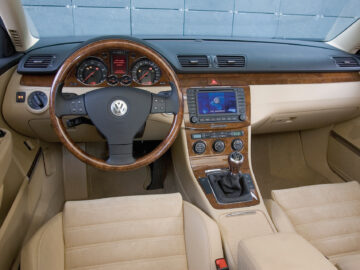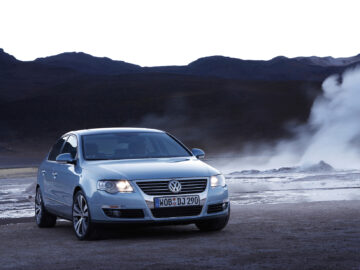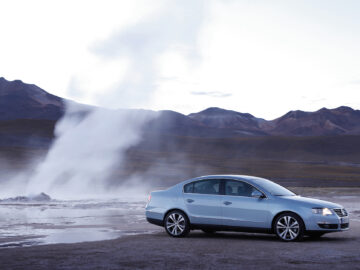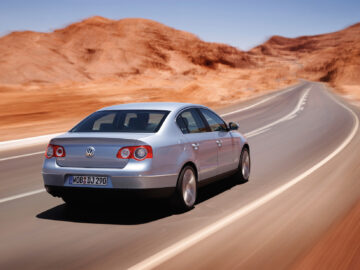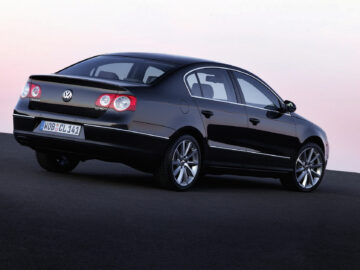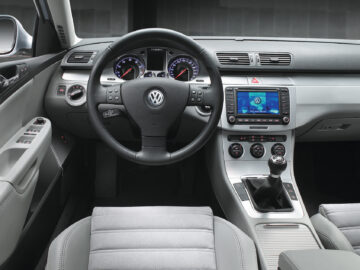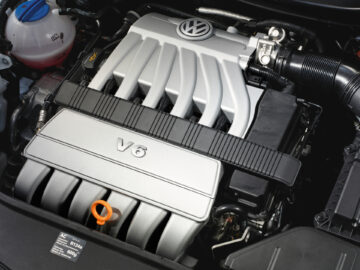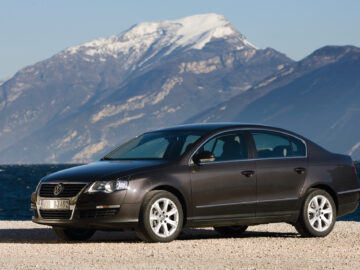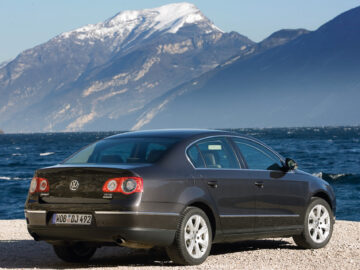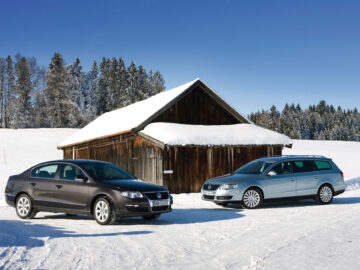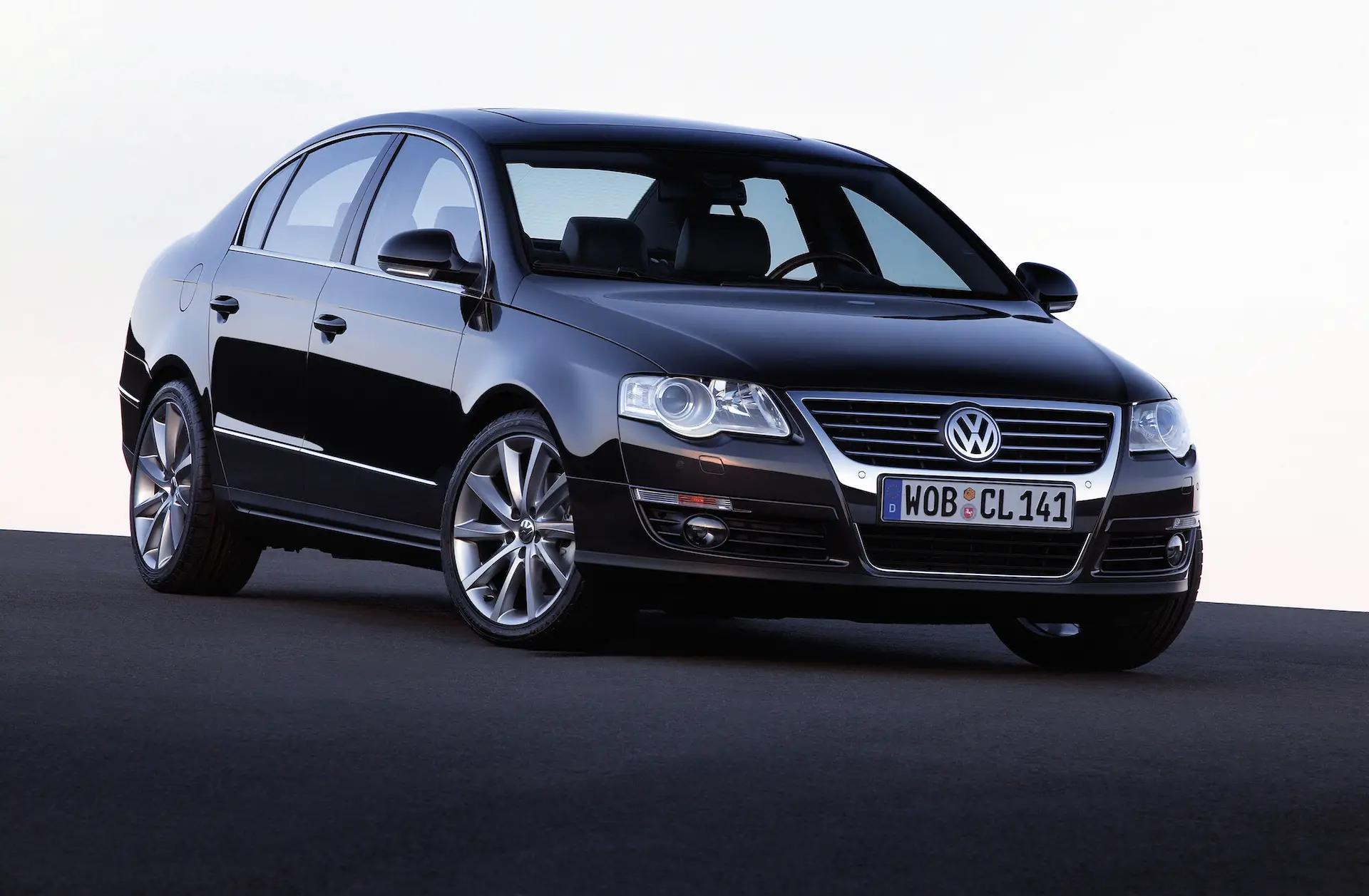Retrospective: Volkswagen Passat B4, B5 and B6
One of Europe’s most successful business cars
This fall, Volkswagen will present the ninth generation of the Passat, which will be the B9. With that model, Volkswagen is attempting to continue a success story. From families to cab drivers – everyone could and can rely on the Passat. The Passat has also been the ultimate mode of transportation for business drivers for decades; in fact, it is one of the most successful business cars in Europe. Soon, therefore, generation B9. Now first, a look back at the Passat B4, Passat B5 and Passat B6.
Volkswagen Passat B4 (1993-1997)
The Passat B4 that Volkswagen introduced at the 1993 IAA in Frankfurt was a safe choice for any user. Like its predecessors, the B4 was a successful combination of elegance, aerodynamics and functionality. The fourth generation inherited the talents of its predecessor, but was finely honed in many details. Like its predecessor, the Passat B4 was available as a Limousine and a Variant.
The B3 didn’t really fit into Volkswagen’s model lineup anymore: it was the only model without a grille, and so the Passat B4 got that grille back. Its “happy face” was in line with that of models from the same generation, such as the Golf III. For optimal occupant protection, Volkswagen relied on a platoon of new protective angels: in addition to airbags for the driver and front passenger, there were front seatbelt pretensioners, rear head restraints and an electronically controlled anti-lock braking system (ABS). In addition, the bodywork was thirty percent stiffer compared to its predecessor.
Many drivers were raving about the new TDI engines. They had tremendous torque, were extremely economical and made the Volkswagen Passat B4 the king of the long haul. Trips of more than 1,000 kilometers without refueling were now a reality. In 1996, a Passat B4 broke the world record for the longest distance traveled on one tank of fuel. A team of German engineers drove more than 1,500 kilometers without refueling, breaking the previous record by more than a hundred kilometers.
This Passat offered the space and appearance of a luxury limo. Not for nothing was the B4 used as the official vehicle for the G7 summit in Lyon, France, in 1995. The Passat was chosen for its comfortable interior and spacious trunk, which provided enough room for all the luggage of the companions of the world leaders of the time, from Bill Clinton to Jacques Chirac. The last Passat B4 – a Pacific – walked off the assembly line in Emden in April 1997. A total of 690,000 Passats B4 had been produced, 60 percent of them as Variants.
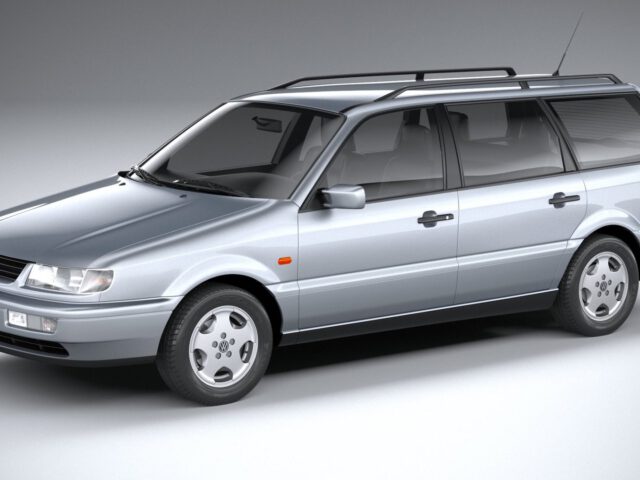
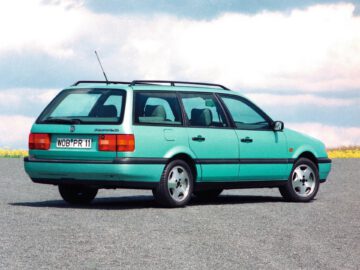
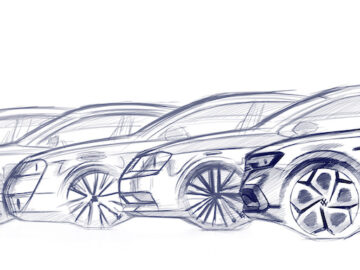


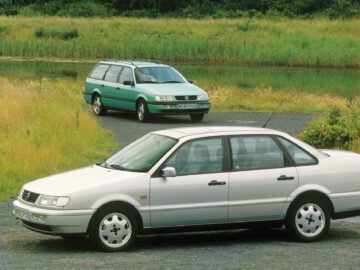
Volkswagen Passat B5 (1996-2005)
In 1996, Volkswagen reinvented the concept of understatement with the Passat B5. Hartmut Warkuß’s design was remarkably unobtrusive. What did stand out was its premium appearance and ditto quality. Take for example the perfect seams between the body parts or the air vents that you could close like mini blinds.
The range of powertrains was stronger than ever: the spectrum ranged from the economical 66 kW (90 hp) TDI to the impressive all-wheel-drive W8 with 202 kW (275 hp). At the same time, digitalization gained momentum: for the first time, the Passat was available with luxury options such as a navigation system with color map display, an electronically controlled Tiptronic transmission and ESP anti-slip protection.
A new feature of the Passat B5 was the Climatronic system, an advanced automatic air conditioning system with separate temperature control for the driver and passengers. With the B5, the Passat once again proved its business prowess. Between 1996 and 2005, the B5 was one of the most sought-after business lease cars in the Netherlands.
The diesels were by far the most popular. Pump injectors made their appearance with this generation in 2001; a six-cylinder diesel was also possible. Volkswagen built the B5 in Germany, Spain, Portugal, Brazil and China. At the latter plant, the Passat ran off the assembly line as the Passat Lingyu until 2011.

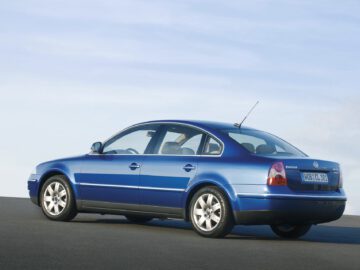
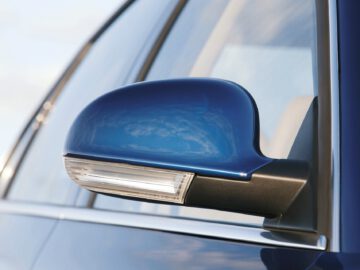
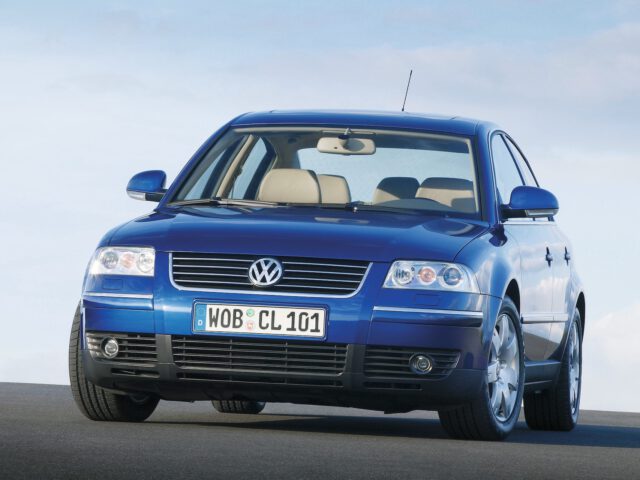
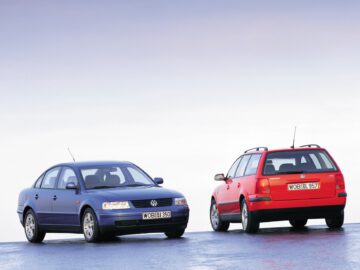
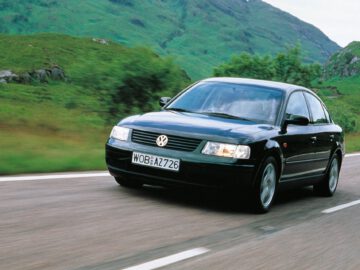

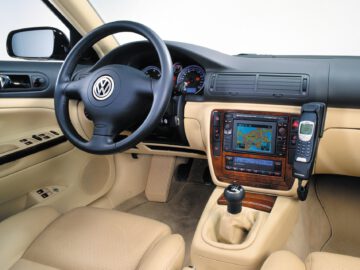
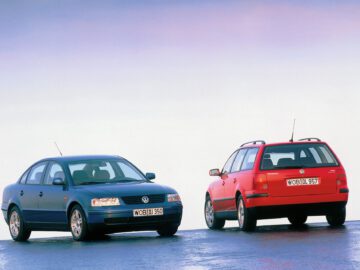

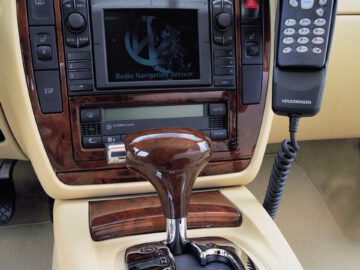
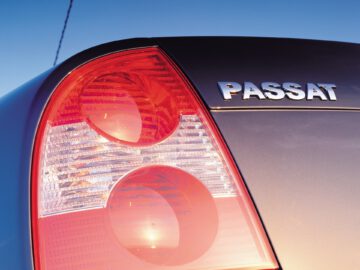
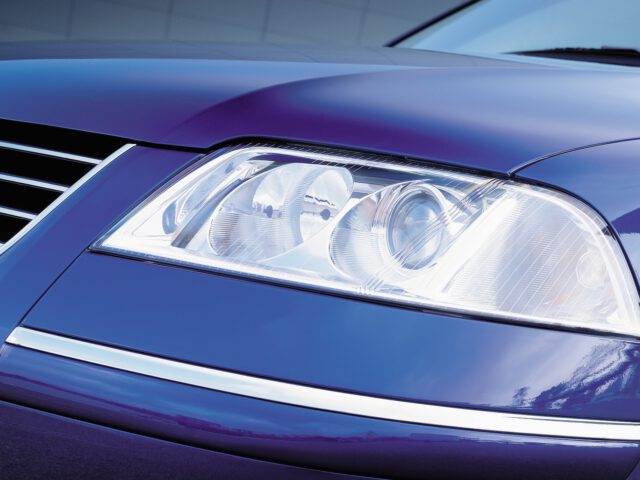

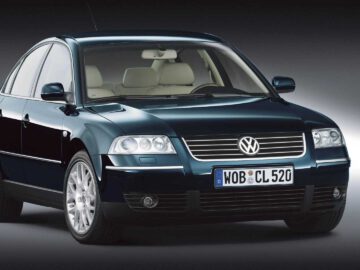
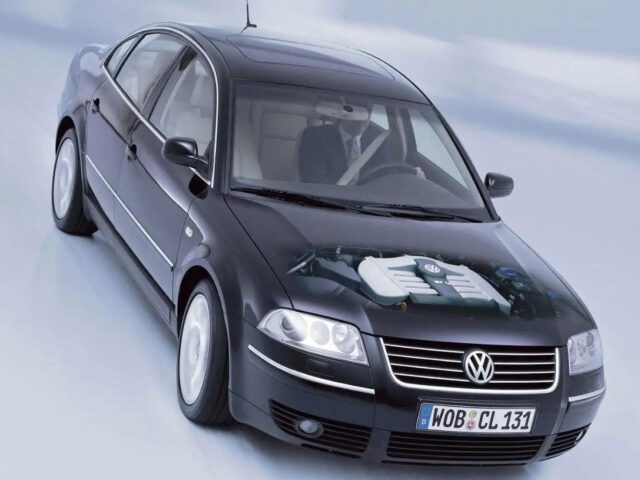
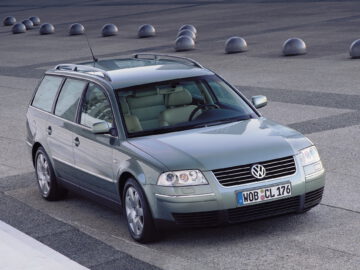
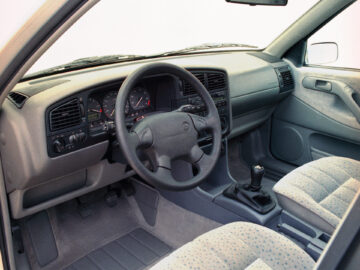
Volkswagen Passat B6 (2005-2010)
The Passat B6 that Volkswagen introduced at the Geneva Motor Show in March 2005 was “more emotional than its predecessors,” according to the press release. The model was designed under the direction of Italian car designer Walter de Silva, then chief designer at the Volkswagen Group. The design of the Passat B6 was an evolution of the design of previous Passat models, with a more streamlined and modern look. The car had a sleeker and more dynamic profile with sharper lines and greater emphasis on the nose of the car. A sophisticated platform architecture provided more space for the occupants and their luggage. The Variant was the benchmark on the market with a huge luggage space, up to 1,731 liters.
Volkswagen equipped the Passat B6 with a number of innovative technologies, including Adaptive Chassis Control (ACC) and Park Assist. ACC adjusted the car’s damping and suspension according to driving conditions, while Park Assist made parking easier by allowing the car to steer and brake automatically. Touchscreen infotainment systems and 4MOTION-Haldex all-wheel drive also made their appearance at Volkswagen.
With the R36 – with its 220 kW (300 hp) six-cylinder engine – the fastest and sportiest Passat of all time made a big impression in 2006. Slightly less powerful but immensely popular – especially with lease drivers – was the Passat B6 diesel version with the new BlueMotion technology. BlueMotion is a combination of technologies that significantly reduce fuel consumption and CO2 emissions. Thanks to this technology, the Passat B6 BlueMotion was the most fuel-efficient model in the Passat range. Global production of the Passat B6 made the car available to consumers around the world and helped the Volkswagen brand grow even further in several markets. Besides Emden, the main production facility for the Passat B6, the popular midsize car ran off the assembly line in Slovakia, China, Russia and South Africa. Not everywhere is called Passat, by the way. In China, for example, it bears the name Magotan.

